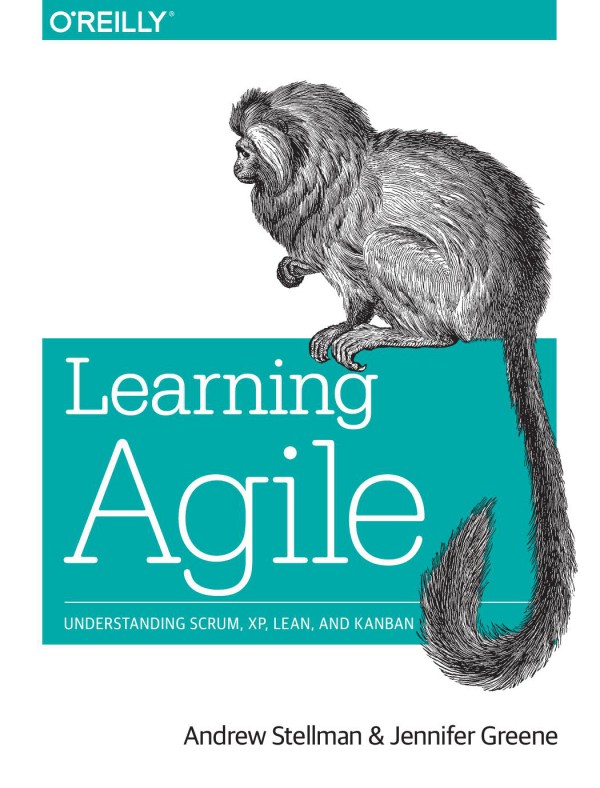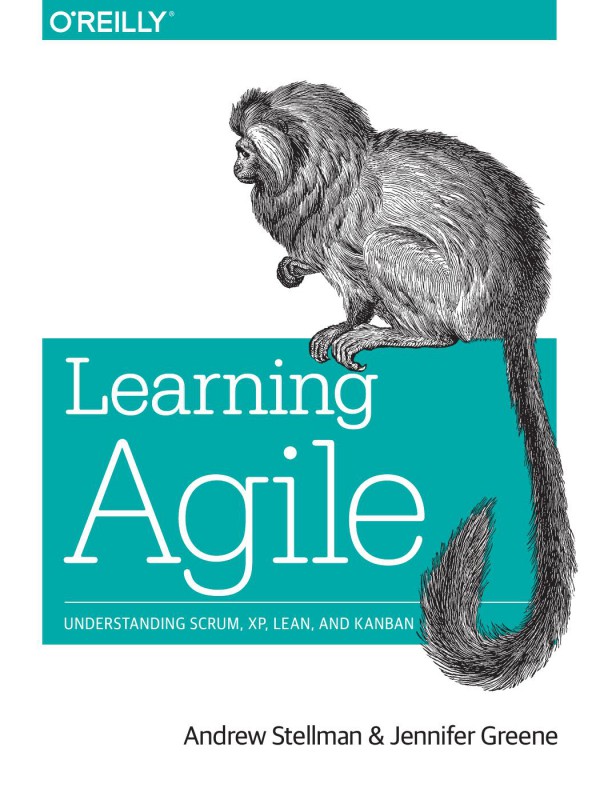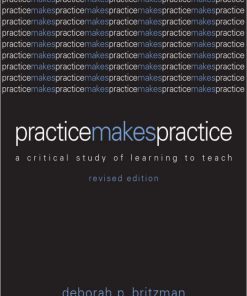Learning Agile Understanding Scrum XP Lean and Kanban 1st Edition by Andrew Stellman, Jennifer Greene ISBN 9781449363857 1449363857
$50.00 Original price was: $50.00.$25.00Current price is: $25.00.
Authors:Andrew Stellman; Jennifer Greene , Series:IT & Computer [211] , Tags:Business & Economics; Project Management; Computers; General; Software Development & Engineering; Business & Productivity Software; Collaboration , Author sort:Stellman, Andrew & Greene, Jennifer , Ids:Google; 9781449363857 , Languages:Languages:eng , Published:Published:Nov 2014 , Publisher:”O’Reilly Media, Inc.” , Comments:Comments:Learning Agile is a comprehensive guide to the most popular agile methods, written in a light and engaging style that makes it easy for you to learn. Agile has revolutionized the way teams approach software development, but with dozens of agile methodologies to choose from, the decision to “go agile” can be tricky. This practical book helps you sort it out, first by grounding you in agile’s underlying principles, then by describing four specific—and well-used—agile methods: Scrum, extreme programming (XP), Lean, and Kanban.Each method focuses on a different area of development, but they all aim to change your team’s mindset—from individuals who simply follow a plan to a cohesive group that makes decisions together. Whether you’re considering agile for the first time, or trying it again, you’ll learn how to choose a method that best fits your team and your company.Understand the purpose behind agile’s core values and principlesLearn Scrum’s emphasis on project management, self-organization, and collective commitmentFocus on software design and architecture with XP practices such as test-first and pair programmingUse Lean thinking to empower your team, eliminate waste, and deliver software fastLearn how Kanban’s practices help you deliver great software by managing flowAdopt agile practices and principles with an agile coach
Learning Agile Understanding Scrum XP Lean and Kanban 1st Edition by Andrew Stellman, Jennifer Greene – Ebook PDF Instant Download/Delivery. 9781449363857 ,1449363857
Full download Learning Agile Understanding Scrum XP Lean and Kanban 1st Edition after payment
Product details:
ISBN 10: 1449363857
ISBN 13: 9781449363857
Author: Andrew Stellman, Jennifer Greene
Learning Agile Understanding Scrum XP Lean and Kanban 1st Edition Table of contents:
Chapter 1. Learning Agile
What Is Agile?
Who Should Read This Book
Our Goals for This Book
Getting Agile into Your Brain by Any Means Necessary
How This Book Is Structured
Chapter 2. Understanding Agile Values
A Team Lead, Architect, and Project Manager Walk into a Bar…
No Silver Bullet
Agile to the Rescue! (Right?)
Adding Agile Makes a Difference
“Better-Than-Not-Doing-It” Results
A Fractured Perspective
How a Fractured Perspective Causes Project Problems
Why Does a Fractured Perspective Lead to Just Better-Than-Not-Doing-It Results?
The Agile Manifesto Helps Teams See the Purpose Behind Each Practice
Individuals and Interactions Over Processes and Tools
Working Software Over Comprehensive Documentation
Customer Collaboration Over Contract Negotiation
Responding to Change Over Following a Plan
Principles Over Practices
Understanding the Elephant
Methodologies Help You Get It All in Place at Once
Where to Start with a New Methodology
Chapter 3. The Agile Principles
The 12 Principles of Agile Software
The Customer Is Always Right…Right?
“Do As I Say, Not As I Said”
Delivering the Project
Principle #1: Our Highest Priority Is to Satisfy the Customer Through Early and Continuous Delivery
Principle #2: Welcome Changing Requirements, Even Late In Development. Agile Processes Harness Chang
Principle #3: Deliver Working Software Frequently, from a Couple of Weeks to a Couple of Months, wit
Better Project Delivery for the Ebook Reader Project
Communicating and Working Together
Principle #4: The Most Efficient and Effective Method of Conveying Information To and Within a Devel
Principle #5: Businesspeople and Developers Must Work Together Daily Throughout the Project.
Principle #6: Build Projects Around Motivated Individuals. Give Them the Environment and Support The
Better Communication for the Ebook Reader Project
Project Execution—Moving the Project Along
Principle #7: Working Software Is the Primary Measure of Progress.
Principle #8: Agile Processes Promote Sustainable Development. The Sponsors, Developers, and Users S
Principle #9: Continuous Attention to Technical Excellence and Good Design Enhances Agility.
A Better Working Environment for the Ebook Reader Project Team
Constantly Improving the Project and the Team
Principle #10: Simplicity—the Art of Maximizing the Amount of Work Not Done—Is Essential.
Principle #11: The Best Architectures, Requirements, and Designs Emerge from Self-Organizing Teams.
Principle #12: At Regular Intervals, the Team Reflects on How to Become More Effective, Then Tunes a
The Agile Project: Bringing All the Principles Together
Chapter 4. Scrum and Self-Organizing Teams
The Rules of Scrum
Act I: I Can Haz Scrum?
Everyone on a Scrum Team Owns the Project
The Scrum Master Guides the Team’s Decisions
The Product Owner Helps the Team Understand the Value of the Software
Everyone Owns the Project
Scrum Has Its Own Set of Values
Act II: Status Updates Are for Social Networks!
The Whole Team Uses the Daily Scrum
Feedback and the Visibility-Inspection-Adaptation Cycle
The Last Responsible Moment
How to Hold an Effective Daily Scrum
Act III: Sprinting into a Wall
Sprints, Planning, and Retrospectives
Iterative or Incremental?
The Product Owner Makes or Breaks the Sprint
Visibility and Value
How to Plan and Run an Effective Scrum Sprint
Act IV: Dog Catches Car
Chapter 5. Scrum Planning and Collective Commitment
Act V: Not Quite Expecting the Unexpected
User Stories, Velocity, and Generally Accepted Scrum Practices
Make Your Software Useful
User Stories Help Build Features Your Users Will Use
Conditions of Satisfaction
Story Points and Velocity
Burndown Charts
Planning and Running a Sprint Using Stories, Points, Tasks, and a Task Board
Generally Accepted Scrum Practices
Act VI: Victory Lap
Scrum Values Revisited
Practices Do Work Without the Values (Just Don’t Call It Scrum)
Is Your Company’s Culture Compatible with Scrum Values?
Chapter 6. XP and Embracing Change
Act I: Going into Overtime
The Primary Practices of XP
Programming Practices
Integration Practices
Planning Practices
Team Practices
Why Teams Resist Changes, and How the Practices Help
Act II: The Game Plan Changed, but We’re Still Losing
The XP Values Help the Team Change Their Mindset
XP Helps Developers Learn to Work with Users
Practices Only “Stick” When the Team Truly Believes in Them
An Effective Mindset Starts with the XP Values
The XP Values
Paved with Good Intentions
Act III: The Momentum Shifts
Understanding the XP Principles Helps You Embrace Change
The Principles of XP
XP Principles Help You Understand Planning
XP Principles Help You Understand Practices—and Vice Versa
Feedback Loops
Chapter 7. XP, Simplicity, and Incremental Design
Act IV: Going into Overtime, Part 2: Second Overtime
Code and Design
Code Smells and Antipatterns (or, How to Tell If You’re Being Too Clever)
XP Teams Look for Code Smells and Fix Them
Hooks, Edge Cases, and Code That Does Too Much
Code Smells Increase Complexity
Make Code and Design Decisions at the Last Responsible Moment
Fix Technical Debt by Refactoring Mercilessly
Use Continuous Integration to Find Design Problems
Avoid Monolithic Design
Incremental Design and the Holistic XP Practices
Teams Work Best When They Feel Like They Have Time to Think
Team Members Trust Each Other and Make Decisions Together
The XP Design, Planning, Team, and Holistic Practices Form an Ecosystem That Spurs Innovation
Incremental Design Versus Designing for Reuse
When Units Interact in a Simple Way, the System Can Grow Incrementally
Great Design Emerges from Simple Interactions
Act V: Final Score
Chapter 8. Lean, Eliminating Waste, and Seeing the Whole
Lean Thinking
You Already Understand Many of These Values
Commitment, Options Thinking, and Set-Based Development
Act I: Just One More Thing…
Creating Heroes and Magical Thinking
Eliminate Waste
Use a Value Stream Map to Help See Waste Clearly
Gain a Deeper Understanding of the Product
See the Whole
Find the Root Cause of Problems That You Discover
Deliver As Fast As Possible
Use an Area Chart to Visualize Work in Progress
Control Bottlenecks by Limiting Work in Progress
Pull Systems Help Teams Eliminate Constraints
Chapter 9. Kanban, Flow, and Constantly Improving
Act II: Playing Catch-Up
The Principles of Kanban
Find a Starting Point and Evolve Experimentally from There
Stories Go into the System; Code Comes Out
Improving Your Process with Kanban
Visualize the Workflow
Limit Work in Progress
Measure and Manage Flow
Use CFDs and WIP Area Charts to Measure and Manage Flow
Little’s Law Lets You Control the Flow Through a System
Managing Flow with WIP Limits Naturally Creates Slack
Make Process Policies Explicit So Everyone Is on the Same Page
Emergent Behavior with Kanban
Chapter 10. The Agile Coach
Act III: Just One More Thing (Again?!)…
Coaches Understand Why People Don’t Always Want to Change
Coaches Listen for Warning Signs That the Team Is Having Trouble with a Change
Coaches Understand How People Learn
Use Shuhari to Help a Team Learn the Values of a Methodology
Coaches Understand What Makes a Methodology Work
The Principles of Coaching
Index
People also search for Learning Agile Understanding Scrum XP Lean and Kanban 1st Edition:
learning agile understanding scrum xp lean and kanban pdf
difference between scrum kanban lean and xp
what is scrum kanban and xp
difference between scrum kanban and xp
You may also like…
eBook PDF
Changing Software Development Learning to Become Agile 1st Edition by Allan Kelly ISBN 9780470725313












